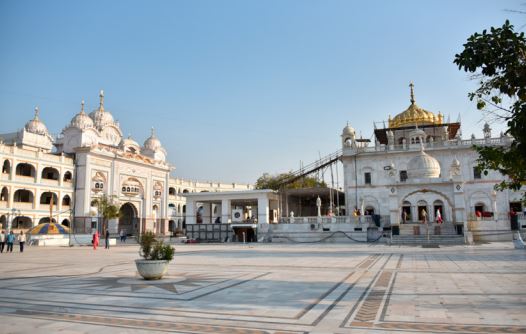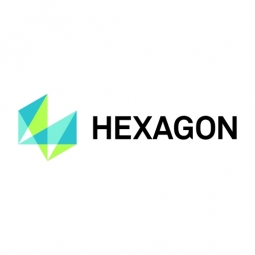
Technology Category
- Infrastructure as a Service (IaaS) - Public Cloud
- Sensors - Camera / Video Systems
Applicable Industries
- Cities & Municipalities
- National Security & Defense
Applicable Functions
- Procurement
Use Cases
- Smart City Operations
- Tamper Detection
Services
- System Integration
The Customer
Nanded
About The Customer
Nanded City, located in India's Maharashtra State, is home to approximately 1.2 million residents. The city is of great spiritual significance for the Sikh religion, featuring numerous Gurdwaras (places of worship) and attracting a heavy influx of visitors all year round. The city leaders, recognizing the need for enhanced security, initiated the C-Cube project, a command, control, and communication center designed to monitor the entire city. The city officials, in collaboration with security consultants MIPL and system integrator Samarth Security Systems (India) Pvt. Ltd., sought to implement a comprehensive and affordable safe city solution.
The Challenge
Nanded, a city in India's Maharashtra State, is a significant spiritual hub for the Sikh religion, attracting a large number of visitors throughout the year. The city leaders identified a need to enhance security and realized that an innovative approach was necessary to meet their needs and budget requirements. This led to the inception of the C-Cube project, Nanded’s command, control, and communication center, designed to monitor the entire city. The challenge was to design a Safe City solution that would provide comprehensive functionality within the budget constraints. The city leaders, along with security consultants MIPL and system integrator Samarth Security Systems (India) Pvt. Ltd., were tasked with this responsibility.
The Solution
Qognify developed a safe city solution for Nanded's C-Cube, which consisted of several integrated components to provide law enforcement with situational awareness and management. The solution included a Situation Management backbone, video surveillance, high-resolution and night vision cameras, pre-configured advanced Standard Operating Procedures (SOPs) in the local language, and panic buttons deployed throughout the city. The solution addressed specific challenges such as disaster management, crowd formation and social unrest, citywide public address system, and VIP route monitoring and processing. The solution leveraged Qognify's video management system (VMS) as their public address system, eliminating the need for additional equipment. The system also allowed for real-time monitoring during VIP route monitoring.
Operational Impact
Quantitative Benefit

Case Study missing?
Start adding your own!
Register with your work email and create a new case study profile for your business.
Related Case Studies.

Case Study
Turning A Stadium Into A Smart Building
Honeywell created what it called the “intelligent system” for the National Stadium in Beijing, China, turning the venue for the opening and closing events at the 2008 Summer Olympics into a “smart building.” Designed by highly controversial artist Ai Weiwei, the “Bird’s Nest” remains one of the most impressive feats of stadium architecture in the world. The 250,000 square meter structure housed more than 100,000 athletes and spectators at a time. To accommodate such capacity, China turned to Honeywell’s EBI Integrated Building Management System to create an integrated “intelligent system” for improved building security, safety and energy efficiency.
.png)
Case Study
Smart Street Light Network (Copenhagen)
Key stakeholders are taking a comprehensive approach to rethinking smart city innovation. City leaders have collaborated through partnerships involving government, research institutions and solution providers. The Copenhagen Solutions Lab is one of the leading organizations at the forefront of this movement. By bringing together manufacturers with municipal buyers, the Copenhagen Solutions Lab has catalyzed the development and deployment of next-generation smart city innovations. Copenhagen is leveraging this unique approach to accelerate the implementation of smart city solutions. One of the primary focus areas is LED street lighting.

Case Study
Buoy Status Monitoring with LoRa
The Netherlands are well-known for their inland waterways, canals, sluices and of course port activities. The Dutch Ministry of Infrastructure indicates that there are thousands of buoys and fixed items in and near water environments that would profit from IoT monitoring. One of the problems with buoys for example, is that they get hit by ships and the anchor cable breaks. Without connectivity, it takes quite some time to find out that something has happened with that buoy. Not to mention the costs of renting a boat to go to the buoy to fix it. Another important issue, is that there is no real-time monitoring of the buoys at this moment. Only by physically visiting the object on the water, one gains insight in its status.

Case Study
China Mobile Smart Parking
Smart Parking, powered by NB-IoT technology, is making it easier for drivers to find free parking spots. Cities can better manage their parking assets and maximize the revenue available to them as a result. Drivers searching for parking create congestion and pollution by circling and hunting for available parking. Smart Parking services are able to significantly ease these problems by guiding a driver directly to a parking space.

Case Study
Barcelona Case Study
Barcelona’s heavy traffic and its associated high levels of pollution were the primary factors that motivated some companies and universities to work on strategies for improving traffic in the city centre. Bitcarrier is one of the technologies involved in the In4Mo Project, whose main objective is to develop the applications that form the core of smart mobility, one of the fundamental pillars of the smart city concept.




